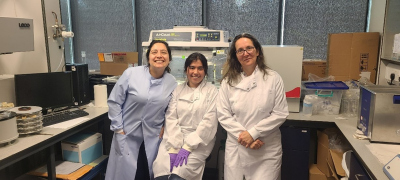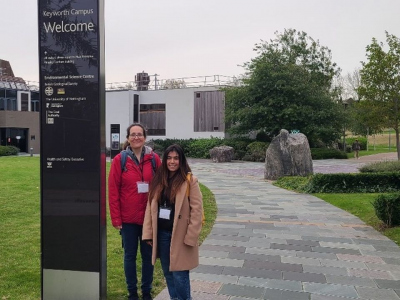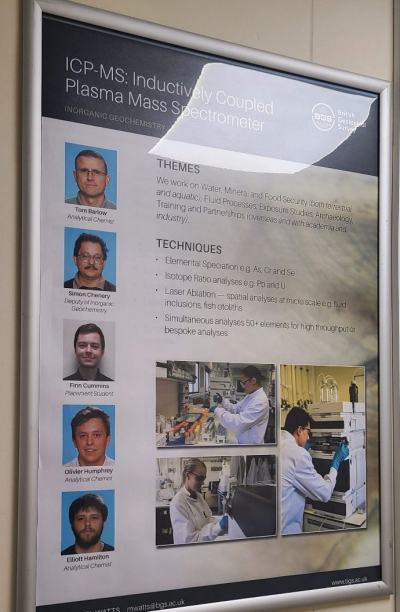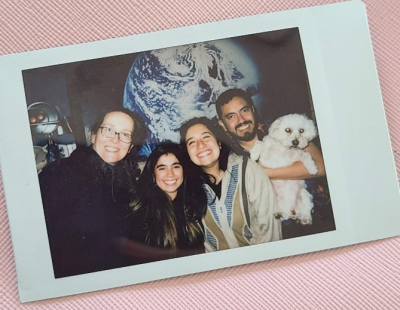- Graduate School GLOMAR
- PhD student reports
- Research Placements
- Sofía Barragán-Montilla
Sofía Barragán-Montilla
Report of GLOMAR PhD student Sofía Barragán-Montilla about her research placement at the Lyell Centre, Heriot-Watt University in Edinburgh (Scotland) from 15 August 2023 to 15 October 2023
I started my PhD in 2021 and a big part of my research took place during lockdown time. However late, this research placement was thought as an opportunity to increase my networking in the field and substantially complement my ongoing investigation with new analyses. During the last 3 years I have been collecting and studying the eastern tropical Atlantic benthic foraminifera from NW African margin cores. This has allowed me to understand how benthic ecosystems in this area have responded to climate change in the last 30.000 years, at the same time we explore and evaluate different geochemical proxies needed in paleoceanographic reconstruction.
In addition to a detailed taxonomic and quantitative analyses of the benthic foraminifera, framed in age models built from radiocarbon dating of planktic foraminifera, these high-resolution studies include stable isotopes to assess bottom water salinity and ventilation changes, and trace element to reconstruct temperature changes. However, my results show that such paleotemperature reconstructions are not straightforward, and the Mg/Ca proxy commonly used for temperature reconstructions is also influenced by bottom water oxygenation changes in certain benthic foraminifera species. This makes necessary to obtain reliable paleo-oxygenation record that allow to correct this effect in certain temperature reconstructions.
Paleo-oxigenation can be accurately reconstructed from taxonomic and quantitative analyses of benthic foraminifera. However, such a tool relies heavily on the completeness of the fossil record and depends on sedimentation and diagenetic processes. Prof. Dr. Babette Hoogakker at the Lyell Center has wide experience in reconstructing such paleo-oxygenation changes in the world oceans. Among the many proxies she has explored, foraminifera I/Ca has shown great promise in quantifying oceanic dissolved oxygen concentrations in the past. After discussions with Dr. Hoogakker, we agreed that it was relevant to explore the use of this proxy in the benthic foraminifera I collected in the eastern Atlantic, an area with limited oxygen records of the last deglaciation.
In the Lyell Center I had the opportunity to learn and apply the specific benthic foraminifera cleaning protocols under the supervision of Dr. Hoogakker, processing 115 samples of benthic foraminifera at the Lyell Center laboratories. This cleaning protocol must be carefully carried out, to remove any material from the foraminifera test that could bias element concentration measurements (like organic matter, clay, Bengal rose stain etc.).
As for trace element analyses, part of the cleaning protocol consists in carefully opening foraminifera chamber to allow removal of contaminant material.
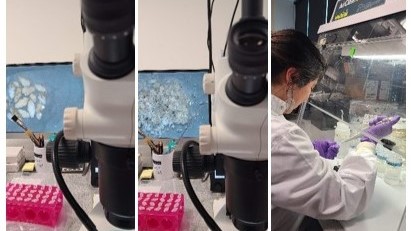
We were later welcomed at the British Geological Survey (BGS) in Keyworth (England) by Dr. Simon Chenery and Dr. Elliott Hamilton. There, trace elements were measured using an ICP-MS located at the Centre for Environmental Geochemistry. I had the chance to see how the equipment works and how the data is obtained, including the subsequent processing necessary to get the concentration of each measured element. These cleaning and measurement methods differ to the carried at MARUM to obtain Mg/Ca ratios and has the advantages that in addition to minor element measurements (like Iodine, Vanadium and Uraninum etc.) major trace elements like Mg and Sr can also be obtained, allowing to simultaneously reconstruct water oxygenation and temperatures.
Overall, the preliminary analyses of the obtained data in Keyworth shows good agreement with the paleo-oxygenation reconstruction based on benthic foraminifera taxonomy, indicating that these are reliable tools in the eastern Atlantic. In addition, the Mg/Ca data from BGS results is remarkably similar to the measured at the University of Bremen using an ICP-OES, ensuring reproducibility of the results.
In addition to the immense technical knowledge I gained at the Lyell Center and the BGS, I also continued developing many soft skills growing my networking and providing bridges for new collaborations. The obtained results are very promising, and hopefully will motivate new publications. I am deeply thankful to Babette Hoogakker and her amazing team Dharma Reyes Macaya, Sebastián Garrido and Tomasso Paolini, who were incredibly welcoming and made my stay most fructiferous and warm. The many discussions with Dr. Hoogakker and Dharma Reyes were also motivating and allowed me to make big advancements on my thesis. Our conversations within the research group about mental health, equity and inclusion in science, and early career support for advancement were enlightening and, in many ways, uplifting.
I would like to thank my PhD supervisors for their support, and I am especially grateful to GLOMAR for funding a big part of this research placement that has made an immense difference in my PhD experience at MARUM. I would also like to thank the Lyell Center from the Heriot-Watt University in Edinburgh, and the British Geological Survey in Nottingham for welcoming me and letting me do science with you, this has been a life-changing experience for me as an early career researcher. Gracias!



